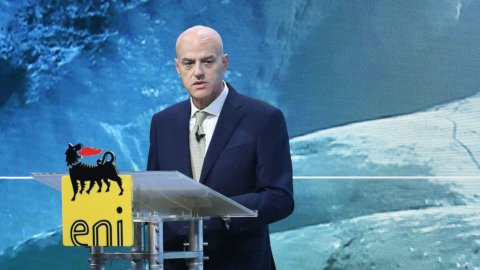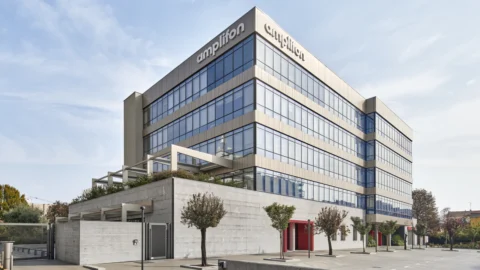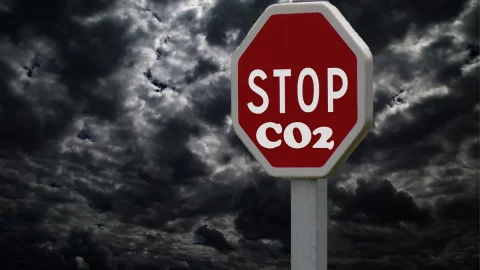Eni closes 2019 with an adjusted net profit significantly down by 37%, from 4,58 billion to 2,87 billion, in a scenario characterized by geopolitical discontinuities and less favorable prices compared to 2018, but distributing a substantial profit of 0,86 euros to shareholders (of which 0,43 already paid as an advance), who were also offered the restart of the 400 million buyback program in 2020. Which means, considering everything, that the remuneration to shareholders was a total of 3,4 billion. “The company is very solid from a financial point of view: the generation of operating cash amounted to 12,1 billion, up on a like-for-like scenario, and was 1 billion higher than the investment expenditure of 7,7 billion ”, commented the CEO Claudio Descalzi, who will end his mandate in the spring and on which it is pending the unknown factor of renewal.
Descalzi also delivered an action plan for the next three years, with long-term goals set in the key date of 2050: until 2025 oil production will continue to grow (in 2019 it rose to record levels, with an average of 1,92 million boe/d in the fourth quarter and a reserve replacement rate of 117%), but then it will gradually leave space for gas, which in 2050 will make up around 85% of total production. THE renewables will increase to over 55 GW in 2050, focusing on bio refining, bio chemistry, recycling and forest conservation and CO2 storage projects. “Eni of the future – continued Descalzi – will therefore be even more sustainable: emissions from our production in 2050 will have dropped by 80%, well beyond the 70% threshold indicated by the Paris Agreements”.
2019 RESULTS
- Hydrocarbon production at record levels:
annual average: 1,87 million boe/d, fourth quarter at 1,92 million boe/d. Excluding the effects of the termination of the Intisar production contract which took place in the third quarter of 2018, the annual change is recalculated as +5%. - Adjusted net profit: €0,55 billion in the quarter, -62% (-61% excluding the effects of IFRS 16); 2,88 billion in the year, -37% (-35% excluding the effects of IFRS 16).
- Net income: net loss of $1,89 billion in Q2019 0,15; net income of XNUMX billion in the year.
- Operating Cash Generation: 3,73 billion in the fourth quarter (-14%); 12,39 billion in the year (-9%) which was affected by the extraordinary payment linked to the definition of an arbitration (approximately 330 million).
- Net investments: 7,73 billion in the year net of the acquisition of 20% of ADNOC Refining and reserves for a total amount of 3,3 billion (insignificant IFRS 16 effects).
- Net financial debt: excluding the application of IFRS 16, net debt comes to €11,5 billion, up 38% compared to 31 December 2018.
STRATEGIC PLAN
“We have drawn up a strategy – explained Claudio Descalzi – which combines economic and environmental sustainability and we have implemented it by designing actions that we have already demonstrated that we are able to implement. This will allow Eni to be a leader in the market to which will provide highly decarbonised energy products actively contributing to the energy transition process”. Eni's strategy is divided into two documents: one with long-term objectives, set for 2050, in which the company lays the foundations for its future in broad terms; the other with short-medium term objectives, through an action plan aiming at 2023.
Long-term strategic plan to 2050: main objectives
- Upstream production growth at an annual rate of 3,5% until 2025, subsequent flexible decline mainly in the oil component. Gas production by 2050 will make up around 85% of total production. Eni counts on an average breakeven of 20 $/bl, collecting 94% of their value by 2035 assuming a constant Brent price of 50 $/bl.
- Sustainability of gas production: forest conservation and CO2 capture and storage projects for a total of over 40 million tonnes/year by 2050. Electricity production from gas associated with 3 CO2 capture and storage projects that will best integrate the supply from renewables .
- Renewables growing strongly to over 55 GW by 2050. Development mainly in OECD countries for the supply of electricity to our customers, expected to increase to over 20 million in the retail market by 2050.
- Refining: gradual conversion of the Italian sites using new technologies for the production of decarbonised products from the recycling of waste materials. Increase of the "bio" refining capacity to 5 million tons.
- Marketing: transformation from service stations to points of sale for the exclusive distribution of new generation sustainable fuels and other differentiated services.
- Chemistry: progressive conversion of existing sites using technologies for more specialized productions, "bio" and recycling of plastics.
- Carbon Footprint: methodology developed, reviewed and verified by third parties, for the comprehensive measurement of emissions. On this basis, a fixed target of reducing absolute emissions by 2050% by 80 (well beyond the 70% threshold indicated by the IEA in the Sustainable Development Scenario - SDS - which tracks the reductions in emissions compatible with the objectives of the Paris Agreement ) and the emission intensity of 55%.
Action Plan 2020-2023
In line with medium/long-term strategies, Eni's short-range strategy envisages the enhancement and growth of the exploration portfolio, with the aim of discovering 2,5 billion boe of resources and above all to geographically diversify production. Cash generation will have to lead the cumulative free cash flow of around 23 billion in 2023, effectively doubling the current figure, thanks to the growth in production CAGR of 3,5% in the period, the further development of the initiatives integrated with the Gas & Power sector and the digital transformation.
With regard to renewable, which in 2050 will have to reach 55 GW, Eni in the meantime plans to build 3 GW of installed capacity by 2023 and 5 GW by 2025, with investments of 2,6 billion over the period of the plan.





